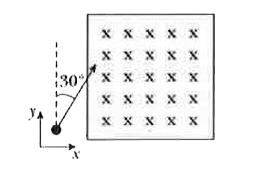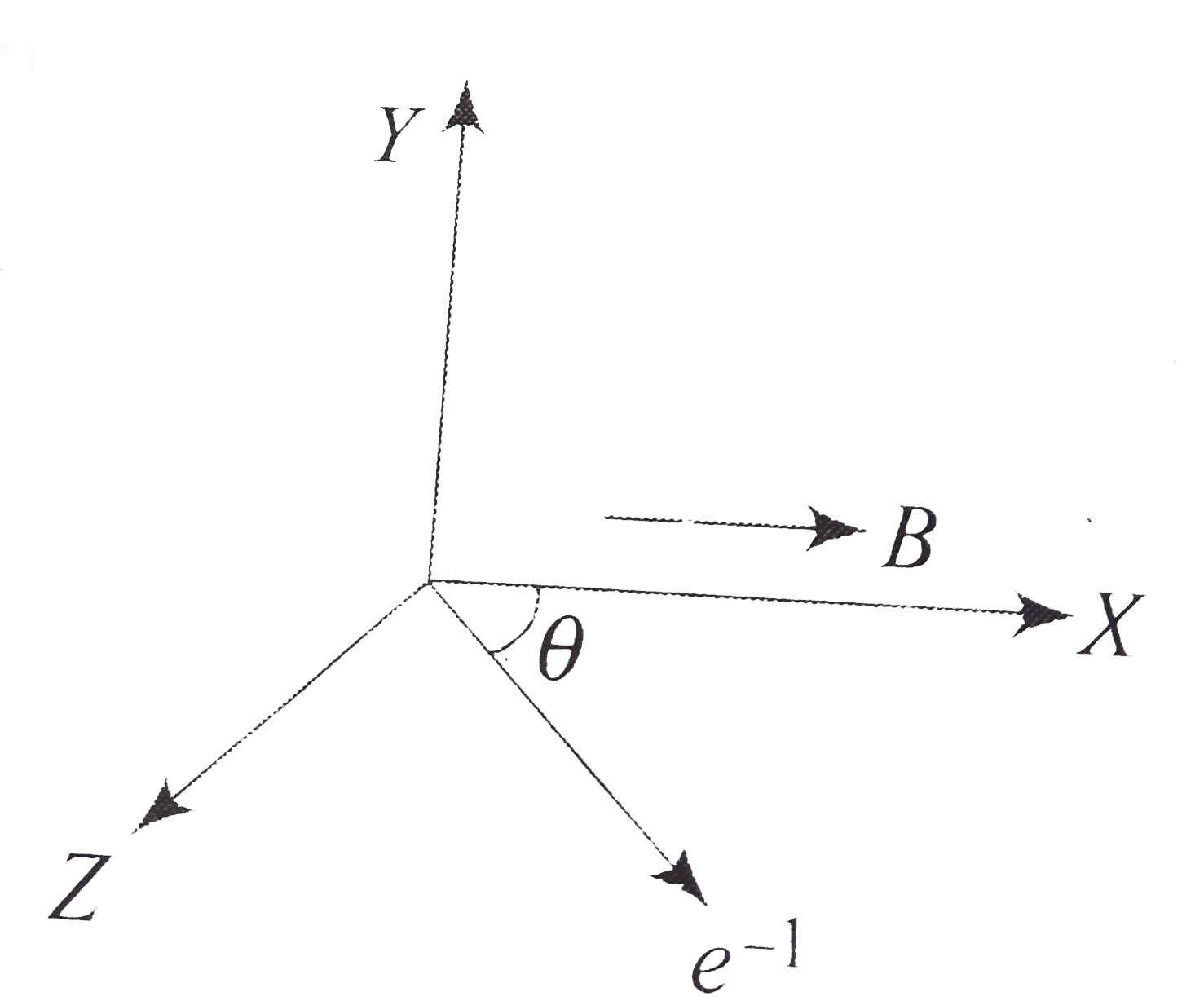A photon with energy of 4.9 eV ejects photoelectrons from tungsten. When the ejcect phototelectrons from tungsten. When the ejected electron enters a cnstant magnetic field of strangth B=2.5 mT at an angle of 60∘ with the field direction, the maximum pitch fo the helix described by the electron is found to be 2.7 mm. Find the work function of the metal in electron volt. Given that specific charge of electron is 1.76xx10^11 C/kg.
The correct Answer is:D
Pitch of helical path, P=(vcosθ)T=vT2
(asθ=60∘)
T=2πmBq=2πBα(α=qm)<br>:. P=πvBα
or v=Bαpπ….(i)
KE=12mv2=E−W
∴W=E−12mv2.....(ii)<br>Substituting value of v from Eq. (i) in Eq. (ii)
we get
W=4.9−12 9.1×10−31×(2.5×10−3)2(1.76×1011)2
×(2.7×10−3)2π2×1.6×10−19
=(4.9−0.4)eV=4.5eV
Topper's Solved these Questions
Similar Questions
Light quanta with energy 4.9 eV eject photoelectrons from metal with work function 4.5 eV. Find the maximum impulse transmitted to the surface of the metal when each electron flies out.
View SolutionA photon of energy E ejects a photoelectron from a metel surface whose work function is ϕ0. If this electron enters into a unifrom magnetic field of induction B in a direction perpendicular to the field and describes a circular path of radius r, then the radius r, is given by, (in the usual notation)
View Solution
Knowledge Check
The surface of a metal is illuminted with the light of 400nm The kinetic energy of the ejection photoelectron was found to be 1.68eV The work function of the metal is :
A1.41eVB1.51eVC1.68eVD3.09eVThe energy of emitted photoelectrons from a metal is 0.9ev, The work function of the metal is 2.2eV. Then the energy of the incident photon is
A0.9eVB2.2eVC4.4eVD3.1eVThe photoelectric effect is described as the ejection of electrons from the surface of a metal when
AIt is heatedBIt is placed in strong electric fieldCElectrons of suitable velocityDLight of suitable wavelength falls on it
The photoelectric effect is described as the ejection of electrons from the surface of a metal when-
View SolutionPhotoelectric effect is described as the ejection of electrons from the surface of a metal when:
View SolutionAn electron enters a region that contains a magnetic field directed into the page as shown. The velocity vector of the electron makes an angle of 30∘ with the +y axis. What is the direction of the magnetic force on the electron when it enters the field ?

View Solution
Light having photon energy hυ is incident on a metallic plate having work function ϕ to eject the electrons. The most energetic enectrons are then allowed to enter in a region of uniform magnetic field B as shown in Fig. The electrons are projected In X-Z plane making an angle θ with X-axis and magnetic field is →B=B0ˆi along X-axis maximum pitch of the helix described by an electron is found to be p. Take mass of electron as m and charge as q. Based on the above information, answer the following questions:
Q. The plot between X-coordinate of the location of electron as a function of time for different frequencies υ of the incident light is
View Solution
Light having photon energy hυ is incident on a metallic plate having work function ϕ to eject the electrons. The most energetic enectrons are then allowed to enter in a region of uniform magnetic field B as shown in Fig. The electrons are projected In X-Z plane making an angle θ with X-axis and magnetic field is →B=B0ˆi along X-axis maximum pitch of the helix described by an electron is found to be p. Take mass of electron as m and charge as q. Based on the above information, answer the following questions:
Q. Considering the instant of crossing origin at t=0 ,the Z-coordinate of the location of electron as a function of time is
View Solution